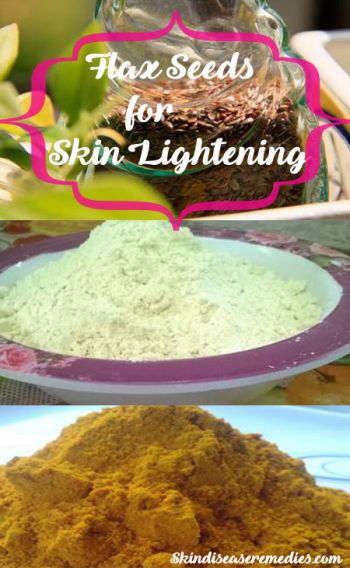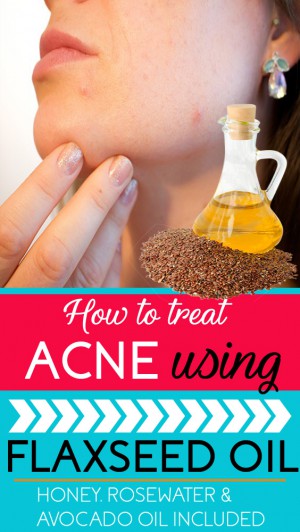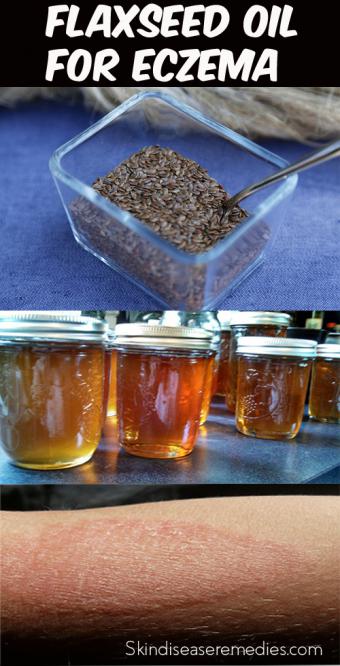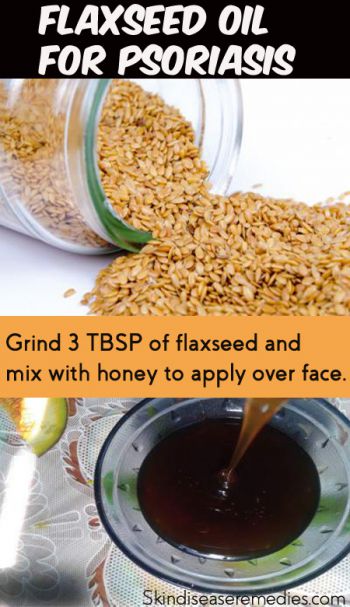Natural ingredients have ability to do wonders on your sensitive skin. This write-up is about using flaxseed oil for skin whitening.
Yes, we all are reluctant to show dark spots over the skin. Every one of us desire to have flawless and glowing skin.
While there are many beauty creams claiming to do so, there are cases where people developed contact dermatitis after using them. This is the reason why most people opt for natural home remedies.
Apart from being cost effective, I love home remedies because they are from nature. On other hand, most ingredients in the cosmetic products are synthetic or chemically extracted.
And no one in the world would like to apply a chemical filled cream over his/her skin. Would you?

Why Flaxseed Oil Is Good for Skin?
These tiny seeds are power house for exceptional nutrients. It has been used extensively to treat various health ailments like cholesterol, diabetes, cardiovascular problems, cancer and digestive issues.
- Omega-3 fatty acid helps to get rid of dry patches over the skin. It also reduces inflammation caused by acne and other chronic skin ailments.
- Clinical reports state that omega-3 fatty acid can reduce scaling and protect skin from UV rays. (1)
- Topical application and ingesting of flax seeds will fade dark spots, improve complexion and skin texture.
- Impurities and dead cells piled over the skin can be cleansed by topical application of this oil.
- Vitamin C can enhance collagen production and avoid premature aging wrinkles.
- Antioxidant agents housed in this ingredient remove oxidative stress and fade wrinkles.
- Lignans residing in flaxseed oil is a phytoestrogen that regulates hormonal imbalance.
- Alpha linolenic acid in the remedy inhibits tumor growth.
- Nutrients like magnesium, protein, fiber, vitamin B complex, vitamin C, omega -3 fatty acid and other minerals residing in flaxseed oil can effectively help to obtain glowing skin.
How to Use Flaxseed for Skin Lightening?
Apart from being inexpensive and effective, what allures me about home remedies are, their easy to use recipes.
Wash your face, pat dry and massage with flaxseed oil.
As simple as that
Same recipe will not work for everyone. So, you’re free to play with other innate ingredients to suit your skin type.
And please don’t expect me to share all the possible recipes here. However, I’ll include most effective recipes.
Recipe #1 – Cleanse and Moisturize
Flaxseed oil can unclog blocked skin pores and exfoliate your skin. Wash your face with water and pat dry with soft cloth.
Massage flaxseed oil over the skin in circular motion and after few minutes, use cotton ball to wipe the oil.
After cleansing, you can use any other natural remedy or flaxseed oil itself.
It’s not important that you must apply the oil right after cleansing. Best time to apply it as a moisturizer is before going to bed.
After dinner, wash your face and apply this innate ingredient over the face and rinse it off in the morning. Regularly apply flaxseed for skin lightening.
Recipe #2 Body Scrub
For an enticing look, not just face you must pamper your whole body. Over the time when you ignore, your hands and legs become dry with dull look.
Yes, it eats your precious time. But, it pays off.
- Take 2 tablespoons of coffee powder, 2 tablespoons of sugar and 1 teaspoon of raw honey in a bowl.
- Add 2 teaspoons of flaxseed oil to the paste and mix thoroughly.
Apply the paste over the body, concentrate on hands, legs, neck and face. Rinse it off after 15-20 minutes.
Recipe #3 Flaxseeds for Skin Lightening
Grind flax seeds to obtain fine powder. Add 1 tablespoon of besan/gram flour and 1 teaspoon of turmeric powder to flaxseed powder.
Add rose water or distilled water to make thick paste.
Wash your face and pat dry. Now, apply the face mask over the skin evenly and leave it for 15-20 minutes.
Assorted nutrients in these innate ingredients treat skin ailments and give you a lightening skin.
Alternatively, you can mix flax seeds powder with yogurt for glowing skin.
Recipe #4 Flaxseed Face Mask
- Blend flaxseeds to form smooth powder.
- 3 teaspoons of distilled water to 1 tsp to flaxseed powder.
- Mix thoroughly and then apply it on prewashed face.
- Allow it to dry naturally for 15-20 minutes and then rinse it off with water.
Recipes #5 Flaxseed Oil and Avocado Oil
Oleic acid residing in avocado oil hydrates your skin and vitamin E improves elasticity of the skin.
Assorted nutrients in the avocado oil help to strengthen the skin and reduce inflammation.
- Mix 2 tsp of flaxseed oil with 2 tsp of avocado oil.
- Wash your face and then apply the oil evenly.
- Leave it to dry naturally for 15 minutes and then rinse it off.
Recipe #6 Flaxseed, Lemon and Honey
Lemon and honey both are prominent to cleanse and moisturize your skin. Bleaching ability residing lemon juice can effectively lighten your skin and fade dark spots.
- Make flaxseed paste by grinding them along with some water.
- Add 2 teaspoons of lemon juice and 1 tbsp of honey to it.
- Mix the ingredient thoroughly and then apply it over prewashed face.
- Allow the mask to be on your skin for 10-15 minutes.
- Rinse it off with water.
Recipe #7 Blue Clay, Rose Water and Flaxseeds
Topical application of blue clay will remove excess sebum from your skin and help to obtain glowing face.
Rose water is packed with moisturizing, anti-bacterial and skin whitening abilities.
- Grind flaxseeds with some water to form paste.
- Add 1 teaspoon of blue clay and required amount of rose water.
- Now, mix the ingredients thoroughly and then apply evenly on the face.
- After 15 minutes, rinse it off with water.
Tips to Obtain Whitening Skin
Apart from applying flaxseed, you must practice healthy lifestyle to lighten the appearance of dark spots and scars.
- Studies show that stress can trigger skin ailments. So avoid it.
- Hydrate your skin from the inside by ingesting vitamin rich and water rich foods.
- Chemical included creams that trigger allergic reaction must be avoided.
- Wear sunscreen cream while going out to avoid excess melanin production.
If you ever used flaxseed for skin whitening, share your recipe in comments.



